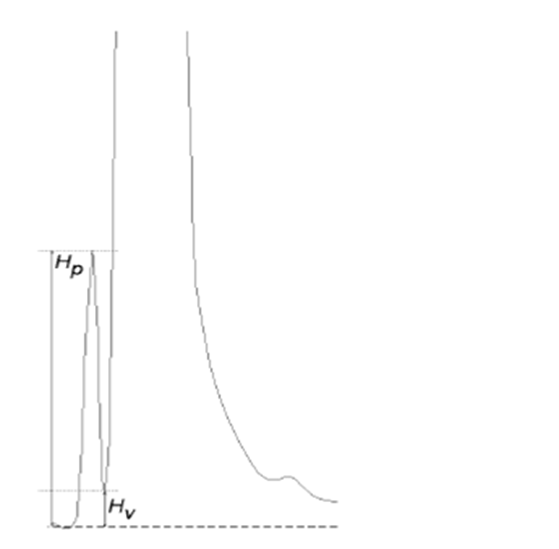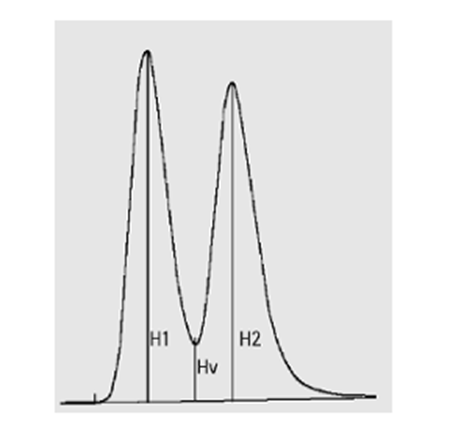Peak to valley ratio calculation (p/v) is applied for measuring separation of two cinematographic peaks. It is may be used as a system suitability requirement in a test for related substances, when baseline separation (resolution) between two peaks is not reached.
p/v = Hp/Hv
Where,
- Hp = height above the extrapolated baseline of the minor peak.
- Hv = height above the extrapolated baseline at the lowest point of the curve separating the minor and major peaks.
Peak to valley ratio is also called another way of specifying resolution. You can improve that be increasing retention (by increasing a few percent of water in your mobile phase), by increasing efficiency (plate count), or by changing selectivity.
The peak-to-valley ratio is calculated using the following equations:
- H1 ≥ H2, Peak valley ratio = H2/Hv
- H1 < H2, Peak valley ratio = H1/Hv;
Where, H1=peak height of the first peak, H2=peak height of the second peak, Hv= height of the valley between the two split peaks.
By adjusting the peak to valley ratio, you can decide if two peaks that do not show baseline separation are separated using a drop line or a valley baseline.



Post a Comment